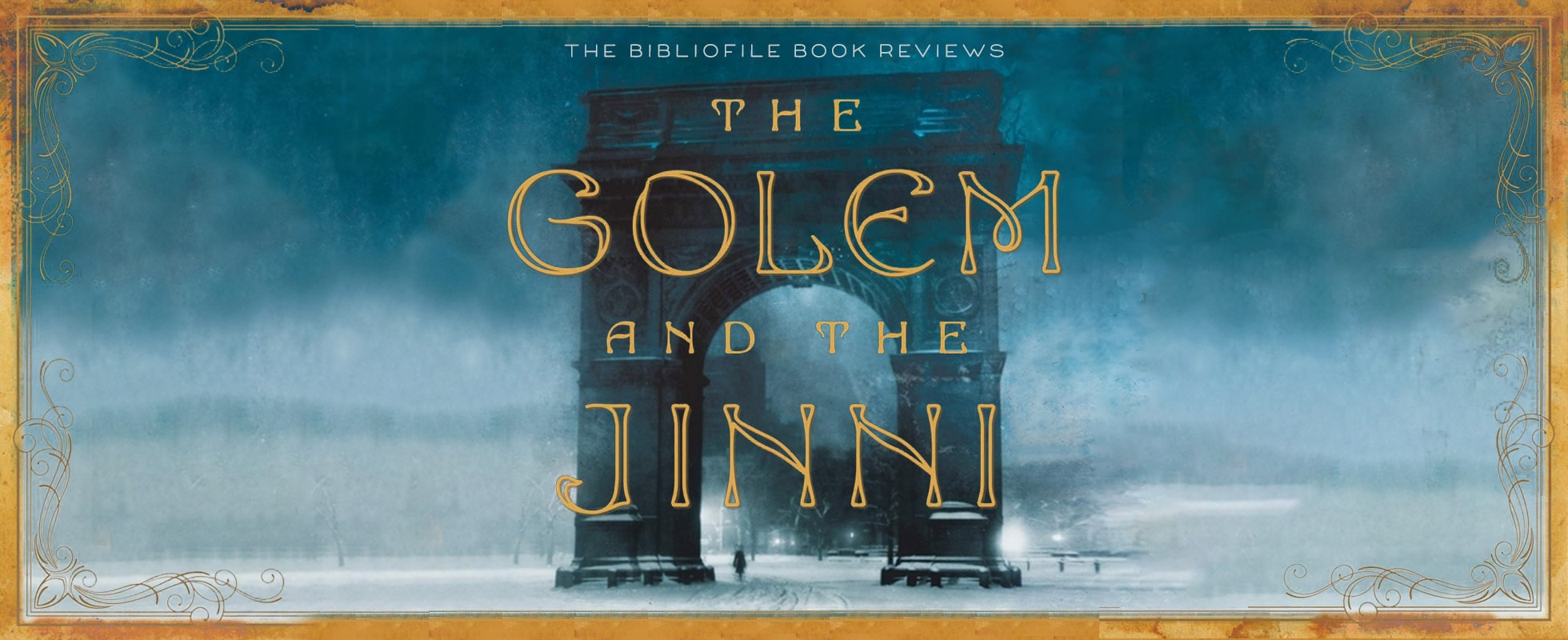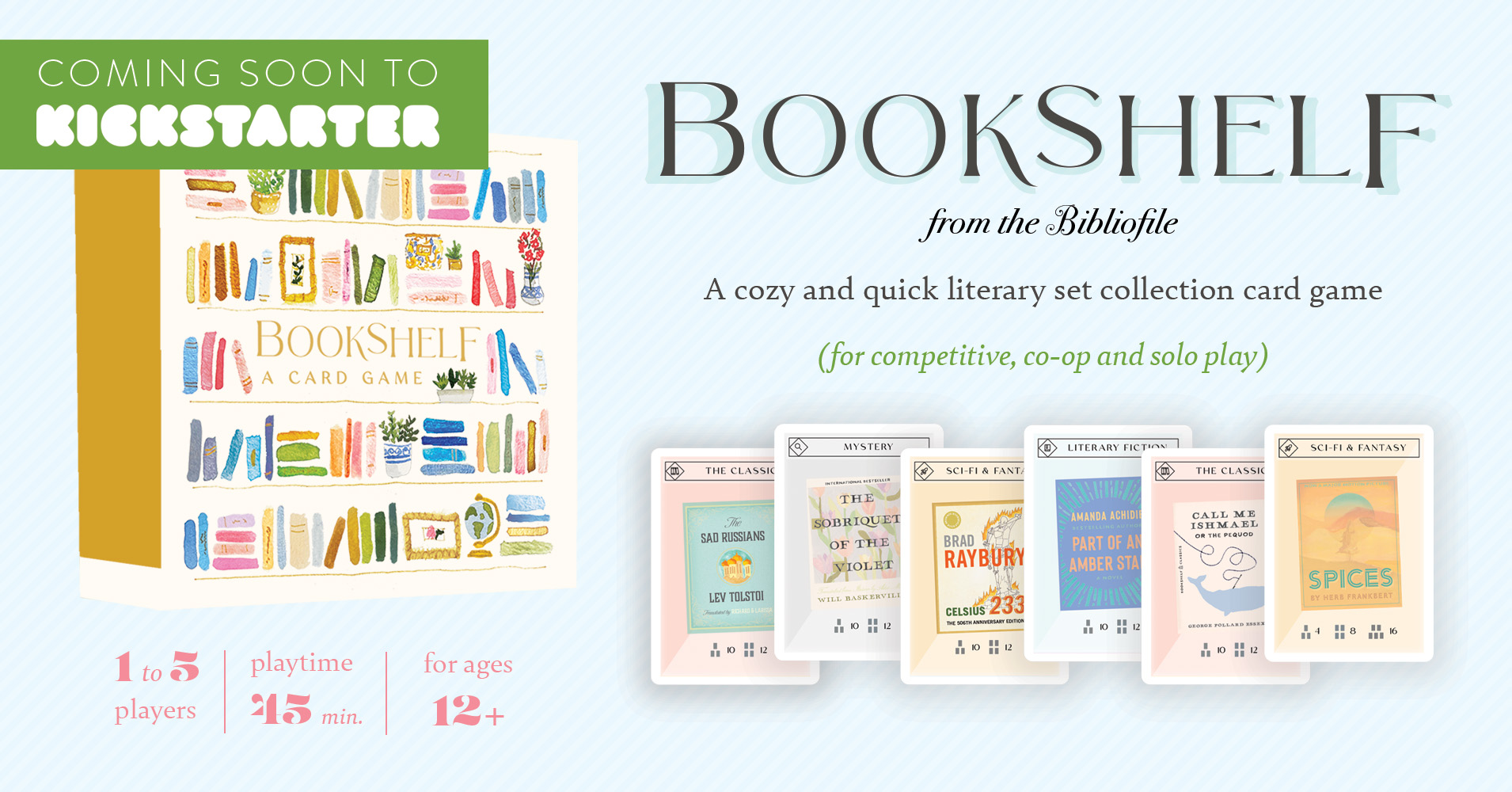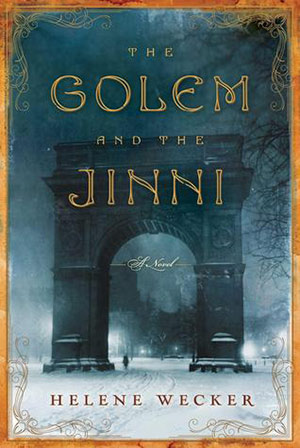In the Golem and the Jinni, Wecker has assembled a truly dazzling and inventive cast of characters, and the strength of her characters alone will probably be enough for many people to enjoy this book. There’s a master of the dark, mystical arts who seeks eternal life; there’s a a former doctor who is plagued by his former possession by a lesser demon; there’s a wealthy socialite who longs for adventure; there’s a young girl living in the Syrian desert who spots a glass palace; and of course there is our titular Golem and Jinni; and so on and so forth.
Wecker comes up with a bunch of intriguing elements and tosses them together. For anyone who is interested in these types of stories, it makes for an irresistible blend of narrative strands and much of the book’s excitement comes from waiting to see what will happen then they finally start to collide.
However, when it comes to knowing what to do with those characters and tantalizing plot elements, though, the book feels less sure-footed.
A lot of the interactions end up being very anticlimactic. A number of characters are built up, only to die off without really doing anything. Meanwhile, Wecker never seems to have a clear idea of the rules behind the magic she conjures up in her novel, discarding previously stated rules when they don’t end up fitting into her plotline.
For example, the Golem is described as being a creature that turns into a destructive, unstoppable force if it or its master is threatened. Endless pages in this book are devoted to explaining why that’s a problem and characters puzzle over what to do with her because of it. But at a pivotal point in the novel (the climax, actually), she just doesn’t do anything in the face of a threat for no particular reason. It goes against everything we’ve been told about her.
There are a ton of other plot holes similar to that (see the end of this post in “Spoiler-ish Thoughts”), which were disappointing to me. It seems like a lot of narrative strands (and easily hundreds of pages of reading) sound really intriguing, but get discarded when they end up not being useful or not fitting in the plot.
Beyond that, less patient readers may be turned off at Wecker’s meandering narration. This book requires a bit of patience. Wecker is one of those writers who likes to start off by providing lengthy backstories for her characters and side-characters before the story really starts. She also likes to describe the characters’ action in painstaking detail, which at times started to wear on me. There’s a ridiculous number of passages and pages just dedicated to describing the characters walking around.
I am not a particularly patient reader, so I struggled with this book early on (I actually began reading it probably five years ago but kept putting it back down). Once I sort of just accepted that it was going to go a bit slowly (not in a boring way, but slow nonetheless), I settled into the pace of it (but then became distracted by the plot holes).
There’s a lot to like about this novel, which is at times charming and inventive, but I still wish that, like, 150 pages had been cut from it. But the plot problems were the big deal breakers for me.
Read it or Skip it?
I hesitated to write this review, because I know how many people love this book. With dark wizards, creatures of legend, heiresses, everyday common folk, wandering nomads and countless other inventive story elements, Wecker has conjured up an array of enticing and exotic characters that will naturally alight your curiosity about what might happen next.
Unfortunately, though, the book rides almost entirely on that potential. The narrative sparks a little, but smolders out and that potential is essentially left unfulfilled.
I still enjoyed large stretches of the book, and I was intrigued by the book for long stretches of it, but ended up being dissatisfied with a lot of the plotting and the resolution of most of the story lines. I would also say that the pacing of it left me feeling impatient at times as well, but it was mostly the plot holes and not the pacing that dampened my enthusiasm for the book.
I was really hoping to, and expecting to, fall in love with this book, so I am a bit disappointed. And I’m not sold on whether I’ll read the sequel, The Iron Season, currently slated to be released early 2021. It’s a maybe, but I’m leaning “no.” It’s probably one where I’ll wait to see some early reviews and decide then.
See The Golem and the Jinni on Amazon.
Spoiler-ish Thoughts
SPOILERS START HERE. You’ve been warned.
So, I didn’t want to spoil these plot points above, but I thought there were a number of plotting problems.
1. The whole Anna blackmail thing. You would think the Jinni would at least mention to the Golem that Anna had tried to blackmail him after the Golem told him that Anna had access to the papers. After that, I understand the Golem is nice, but befriending someone who uses blackmail to solve her problems (even if she is in desperate straits) is not kind, it’s stupid. Why is she still friends with Anna?
2. The whole sharing memories thing. I disliked how hand-wave-y (e.g. imprecise) the mechanics were regarding how the Jinni and his master share memories. Like, after they had met, what was the deal with when they could see each other’s memories going forward? Randomly, the Jinni would have some of his master’s new memories after they linked up? So did Schaalman have access to all of the Jinni’s thoughts? Why wouldn’t Schaalman have known about the Jinni’s plan and why didn’t he know everything the Jinni knew as he was figuring out what to do. Unless I’m missing something here, none of this was remotely consistent.
3. The Jinni’s memories in general. Why does the Jinni not remember the moments before he was put in the bottle? Why does the Jinni not remember the moments leading up to his capture? Why does he randomly remember the face of the wizard? None of this makes sense nor is it explained.
4. The whole Golem mastery thing. The Golem choosing to have Schaalman be her master, even to save Anna’s life, makes no sense. We’ve spent an entire book, like 150 pages of it reading about her debating over the consequences of her actions, what it means to be responsible for something, etc. We’ve spent so much time reading in detail about her agonizing about what would have happened if Otto met the Rabbi or if she’d been asked to kill, etc. And suddenly all of that careful thinking is just tossed out the window in order to pursue the worst possible plan. I felt like all the time I took to read those conversation was wasted if none of that was actually going to factor into the plot. It’s not like she doesn’t know he’s going to make her kill tons more people if he’s her master. I thought she was supposed to be intelligent? Why not try at least attacking Shaalman?
5. The whole master thing in general. Is it just me or is no one able to be a master to either the Golem or the Jinni for more than like 15 minutes before messing it up, dying or losing control?
6. The whole Fadwa thing. Ibn Malik says he needs Fadwa in order to capture the Jinni, but then I didn’t understand what Fadwa had to do with how they ended up capturing the Jinni at all. They just found a way into the palace and put cuffs on him. Then, Malik used blood to bind it. What did any of that require Fadwa for?
7. The whole stuffing the Jinni back in the bottle thing. I don’t get what their plan to deal with Schaalman was. So, their plan was for the Jinni to go back into the bottle and then what? We know that the Jinni in the bottle is what is keeping Schaalman’s soul around, so, he would just keep being reborn and being evil? That’s a bad plan.
8. The whole stuffing Schaalman into the bottle thing. Why is it so easy to shove someone into a bottle? Shouldn’t it be harder than that? Why are wizards so easy to kill/capture?
9. The whole capturing the Jinni business. Why are Jinnis so easy to capture in general? I though it was supposed to to be so difficult, but then all Ibn Malik does is find the Jinni when he is in a non-airlike form and slap some magic cuffs on him.
10. The whole Jinni building a palace thing. If the Jinni is a creature of the sun and needs it to be stronger, why does he build himself a palace where he needs to step outside it to regain his strength, it doesn’t make any sense.
11. The whole Golem protecting Schaalman thing. Okay, this part I’m actually really annoyed with. A lot of this stuff is nitpicky, but this last point drives me kind of nuts. The book spent so much time hammering in how the Golem will protect her master at any cost blah blah blah and because of that she’s so dangerous blah blah blah, etc. But, then she watches him get imprisoned in a flask and she does nothing? I thought she would try to protect him against anyone who would harm him no matter what until she was destroyed? Why did we spend so long reading about her destructive tendencies if the book was later going to pretend they don’t exist at the most pivotal moment?!?!
Anyway, I was originally just going to list out like three plot holes, but the more I thought about it, the more things I thought of that didn’t make sense. And honestly I could add more, but I’m stopping myself because this list is in the double-digits now. In general, I just thought a lot of the “rules” of this world were really imprecise and not well defined, which was disappointing. It also seemed like a lot of the actions of the characters didn’t make a ton of sense (like with the Golem choosing to let him be her master).



